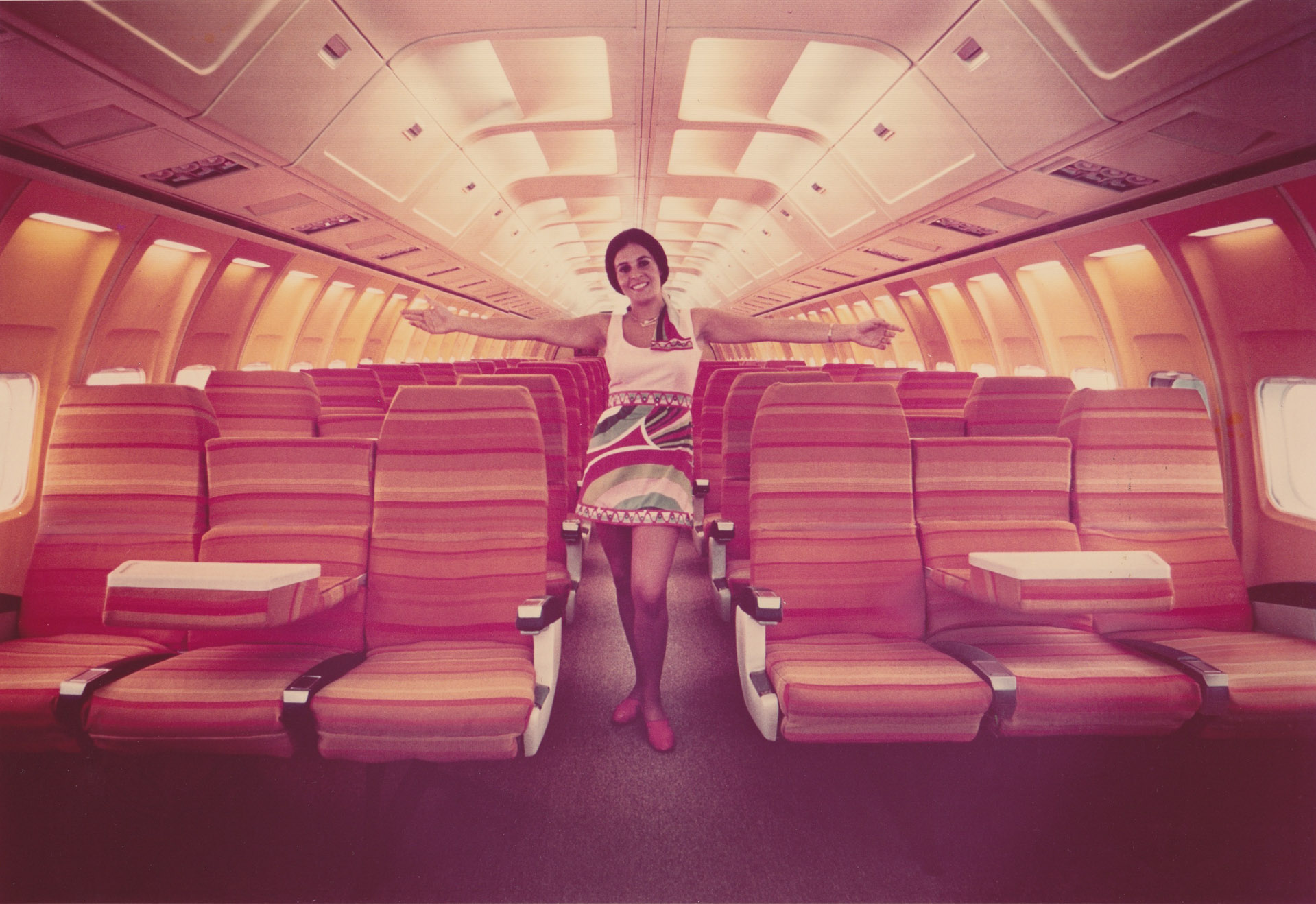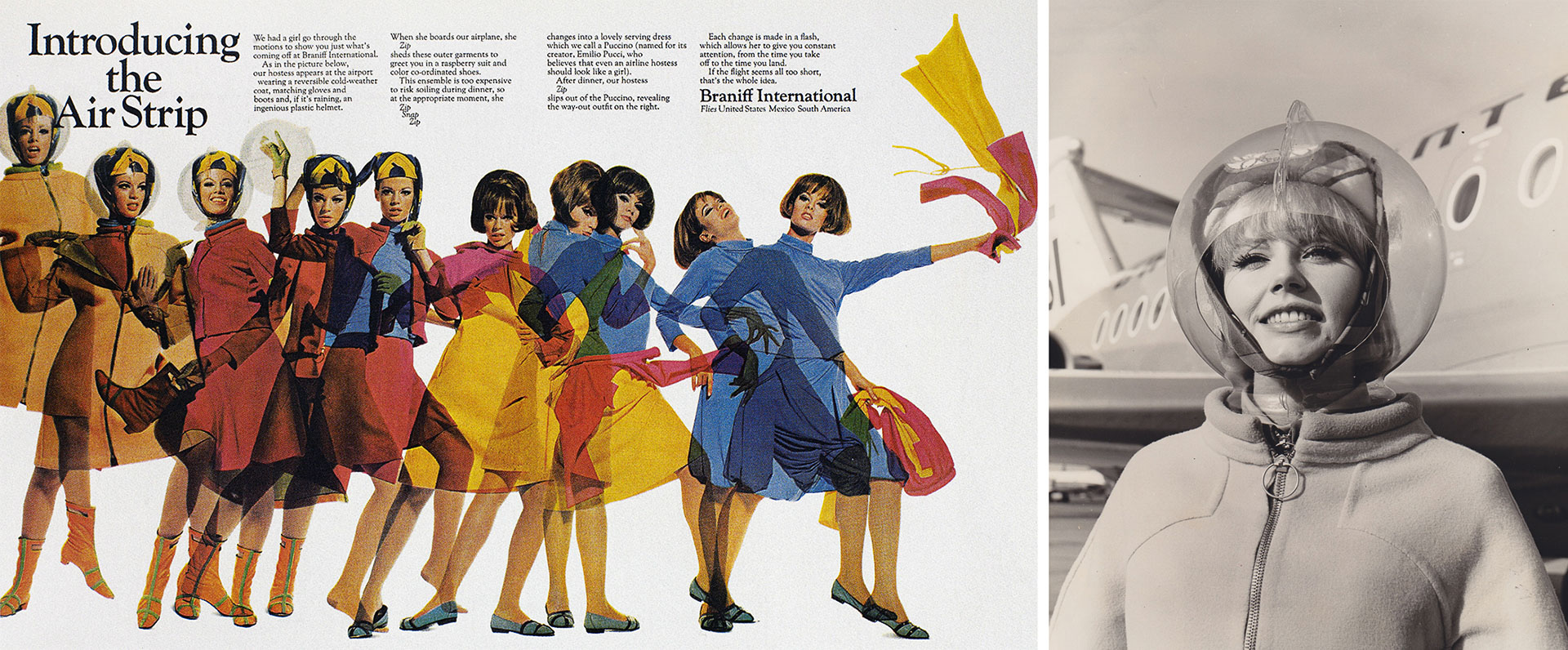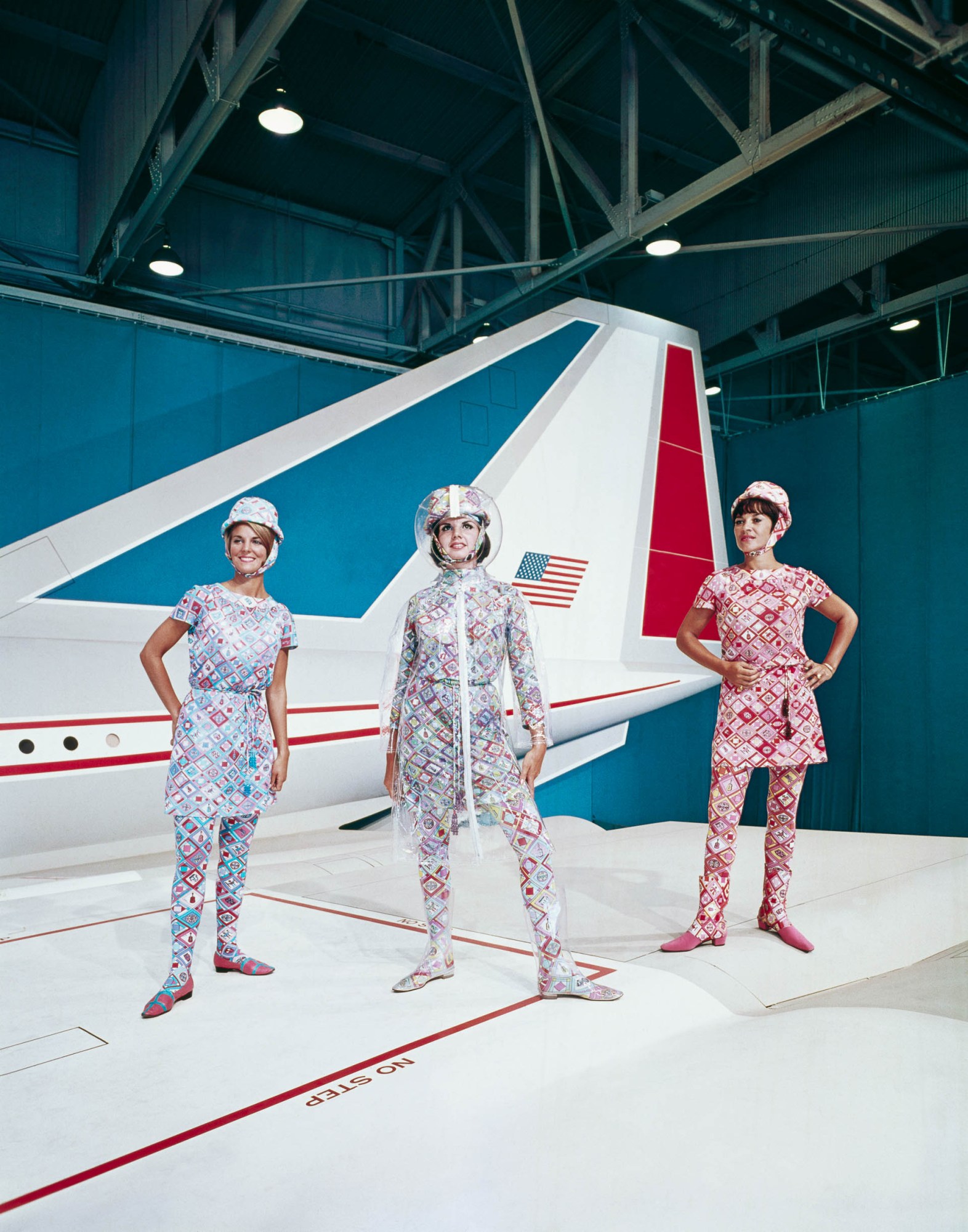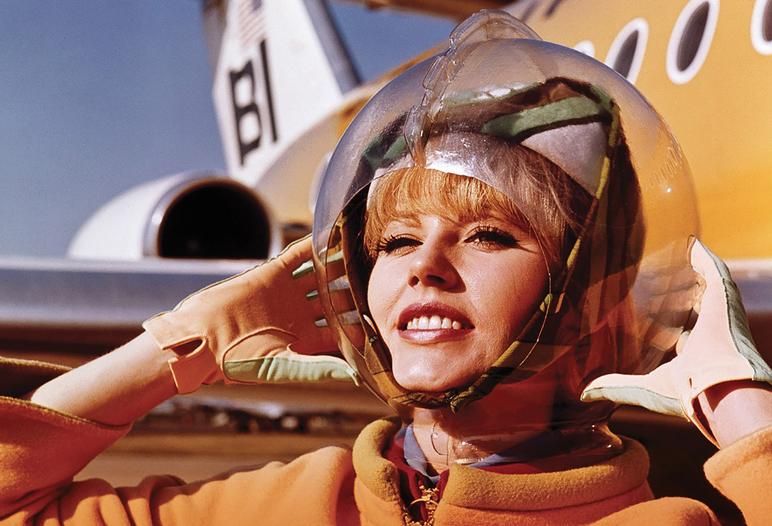This article originally appeared on Amuse
I don’t remember ever being excited to fly. But, having a Canadian dad from the distant Rocky Mountains of Alberta, I did it a lot. Like many frequent flyers, my life was filled with countless, listlessly sticky airtime hours. Packed into a dowdy grey cabin, we ate equally grey food served by fuddy-duddy folk in polyester slacks and ill-fitting waistcoats.
I dreaded every anodyne minute of it. How could international aviation — that miracle of the modern age — be quite so bland? In just half a century, commercial jet travel sank from glamorous adventure to mundane chore.
“Strutting along the aisles of the plane, the hostesses were supposed to partially strip while in the air”
My dad’s baby boomer generation and their post-war parents had apparently enjoyed cocktails and cigars as they streaked through the skies. The travelers wore suits, and the hostesses wore very little at all. In retrospect of course, this super-gendered ‘boys club in the clouds’ dynamic looks like a misogynists’ dream.
The ‘trolley dolly’ image of the time is now a visual shorthand for the bad old days when only certain servile jobs were deemed suitable for women, and the air stewardess became a canvas upon which the male-dominated industry projected their ideas of what women should wear. It’s no surprise that the first Barbie in work clothes was an air hostess.

But for all the outrageous sexism, designing air stewardess uniforms wasn’t just an exercise in male fetish. The 60s and 70s was when the air hostess became accepted into the Western world’s pantheon of iconic roles. It carried connotations of glamour, sex, and freedom, and became a stock aspiration for young girls.
Today, even as a female snowflake millennial, I can’t help but be seduced by the sheer glamour of that golden age of aviation. I find myself looking past the politics of the uniform and basking in their aesthetics — an optimistic fashion era during which space race technology and sartorial poetry joined the mile high club together.
This is a collection of some of the best cabin crew looks from the Mad Men mid-century — and an examination of what they tell us about the times in which they flew.
Braniff Airlines. Designed by Emilio Pucci – 1965: ‘The Air Strip’

In 1965, the now-defunct Braniff Airlines made the bold move to hire radical Italian designer Emilio Pucci to re-imagine their air hostesses. The resultant collection was a boldly futuristic affair, composed of several block-color layers. This modular system of over and under garments helped the hostess deal with a workplace which could span the Tropics and the Arctic Circle in a day. Strutting along the aisles of the plane, they were supposed to partially strip while in the air.
The uniform was crowned with the iconic “Rain Dome” bubble – an obvious homage to astronauts and the space race. Despite their fantastical look, these helmets had a practical purpose – to protect the elaborate hairdos hostesses were required to wear.
Braniff Airlines. Designed by Emilio Pucci – 1967

The Air Strip collection sparked a long and lucrative relationship between Pucci and Braniff. Uniforms were designed and then shed readily as fashion accelerated towards the 1970s. These uniforms were as much a publicity exercise as they were practical work clothing – and they always reflected the fashion zeitgeist of their year.
As such, in 1967, Pucci cranked up the psychedelic factor. Shedding the multi-layered modernism of Air Strip, he produced these eye-sizzling cat suits in a range of Op-art inspired designs. Of course, the space helmets remained — but this look certainly seems to be inspired not just by outer space, but by a hallucinogenic inner vision.
